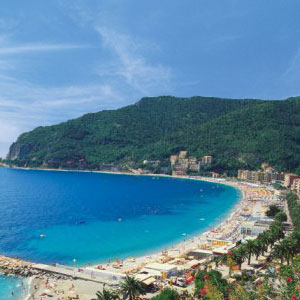Home to precious natural resources, Sardinia Italyis probably the world's most exciting musical destination and houses the oldest form of vocal polyphony. Sardinia is also filled with stunning beaches, mountains, primeval and Roman archeological sites. This primordial land is richly steeped in history and tradition that dates back to human settlements from the Neolithic age.
Sardinia Italy
This wonderful island is the second largest island on the Mediterranean Sea lying between Spain, Italy and Tunisia in the south of Corsica. Sardinia has been given a special statute; it is an autonomous region in the Italian constitution and is the fourth least populated area in Italy. The beaches are a great retreat but there are lots more in the inland of Sardinia.
Sardinia boasts of having the best coastal line in Europe, the clear sea water swarming with fish and shellfish. Summer weaves a magic golden blanket of wheat on the entire valley of Sardinia; Rocky Mountains filled with caves are habitat to large herds of sheep. The olive groves in Sardinia are home to the oldest archeological remains dating back to the 17th century.
Ferries are the common mode of travel to and from Sardinia Italy. The nearest airport is at Cagliari, the capital of Sardinia. There are a couple of airlines that serve this place. Train travel is very slow in Sardinia and thus allows a better glimpse of the sceneries. The trace of numerous invaders can be felt in the cuisine of Sardinia, the food is a blend of Spanish, Italian, Phoenician, Carthaginian and Byzantine cuisines. Bread, salty percorino sardo cheese and seafood are very famous as also the local wine.
Sardinia has plenty of accommodation ranging from hotels, villas, hostels, bed and breakfast facility, camping sites to holiday villages. The climate in Sardinia is always temperate thus making it a year round holiday destination though the summers can turn out to be pretty warm. Shopping in Sardinia is an experience by itself, with local handicrafts making for wonderful memory souvenirs.
Sardinia Italy travel
The nuraghi: More than 700 such towers exist in the island; enveloped with an aura of mystery. They are cone-shaped buildings built in the prehistoric era, Nuraghe Su Nuraxi being the largest and the most striking.
Cagliari: From the Roman period this city has remained the capital of Sardinia. Plenty of remnants from the Roman period, a cathedral and archeological museum still remain here as a symbol of the past.
Nora: Major part of the original Nora is under the Mediterranean, an archeological site enclosing remains from Roman and Carthaginian realms such as mosaics, baths and a theatre.
The Barbagia: A hilly inland region where the Sards took refuge when they were being constantly invaded in the past. It is a beautiful blend of woody hillside and paddocks sprinkled and with secluded settlements.
Li Lolghi: Giant tomb of Sardinia was built 4500 years ago; the construction of this tomb began in 1900BC and carried on for over 1000 years.
Gennargentu Mountains: Tourists who have an appetite for adventure must visit these Rocky Mountains to capture the picturesque beauty of this natural landscape.
Giant's tomb (Coddu Vecchiu): A communal burial ground built 4500 years back has a sequence of erections that were covered by stones and earth in the past.
Tharros: The ruins of Tharros located in the northern peninsula of the Gulf of Oristano. It was a Phoenician-Roman city till it was abandoned in the year 1000AD.
Barumini: A historic town famous for 'Nuraghe Su Nuraxi', a megalithic compound built by the Nuragic people 3500 years ago to protect themselves from invaders.
Apart from the historic and the cultural tour of Sardinia, sailing, wind surfing, diving, motorboat excursions, trekking, hiking, horse riding, cultural excursions, biking and golf are major attractions for tourists.


 Rome Italy City Guide
Rome Italy City Guide Capri Italy
Capri Italy Tuscany Italy
Tuscany Italy Verona Italy
Verona Italy Venice Italy
Venice Italy Paola Italy
Paola Italy Amalfi Coast Italy
Amalfi Coast Italy Naples Italy
Naples Italy Sardinia Italy
Sardinia Italy Vicenza Italy
Vicenza Italy Sorrento Italy
Sorrento Italy Aviano Italy
Aviano Italy Gaeta Italy
Gaeta Italy Ravenna Italy Tourism
Ravenna Italy Tourism Vernazza Italy
Vernazza Italy Trieste Tourism
Trieste Tourism Salerno Tourism
Salerno Tourism Things to do in Genoa
Things to do in Genoa Visiting Florence Italy
Visiting Florence Italy Parma Italy Monuments
Parma Italy Monuments Pisa Tourist
Pisa Tourist Assisi Italy
Assisi Italy Pompeii Italy
Pompeii Italy Siena Italy
Siena Italy Sicily Travel
Sicily Travel










